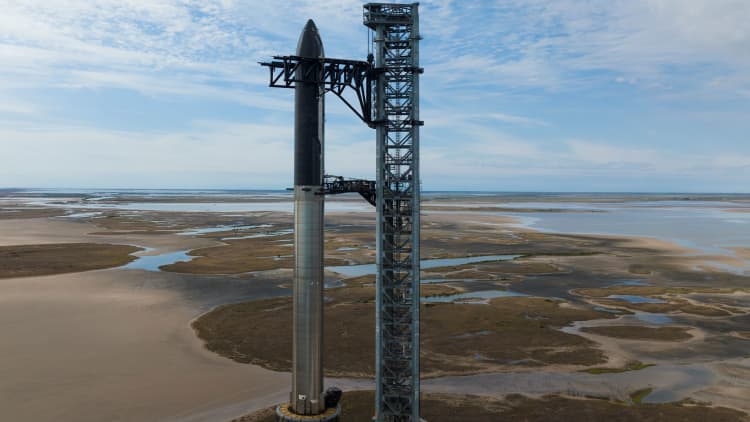
A satellite image shows an overview of the International Space Station with the Boeing Starliner spacecraft, June 7, 2024.
Maxar Technologies | Via Reuters
NASA will have a spacecraft from Elon Musk’s SpaceX guide the International Space Station’s destruction later this decade, the agency announced Wednesday.
The National Aeronautics and Space Administration awarded an $843 million contract to SpaceX to build the so-called “U.S. Deorbit Vehicle.” The spacecraft will be designed to guide the football-field-sized research laboratory back into the Earth’s atmosphere after retiring in 2030.
The SpaceX-built vehicle will effectively destroy the ISS by pushing the station into reentry from orbit.
“It is crucial to prepare for the safe and responsible deorbit of the International Space Station in a controlled manner,” NASA said in a press release, with the U.S. Deorbit Vehicle needed to “ensure avoidance of risk to populated areas.”
SpaceX’s Dragon crew capsule “Endeavour” seen from the International Space Station on May 2, 2024.
NASA
NASA did not specify whether SpaceX’s design for the U.S. Deorbit Vehicle will be based on one of the company’s existing spacecraft, such as its Dragon capsules. SpaceX and NASA did not immediately respond to CNBC’s request for comment on the design.
The U.S. – along with four international partner agencies representing Russia, Europe, Canada, and Japan – has been preparing for the eventual end of the ISS, which has been crewed since 2000. The ISS, primarily created as a crewed research laboratory, has seen more than 3,300 experiments conducted in microgravity. That includes research not possible on Earth such as medical sciences and technology demonstrations.
Aging ISS
But the ISS is aging, with NASA and its lead partner Roscosmos, unable to solvea worsening problem of microscopic leaks on the station.
NASA published a study on Wednesday with analysis of why it decided to intentionally destroy the ISS in a controlled reentry. The agency evaluated a variety of alternatives, including disassembling the station in orbit or trying to raise the ISS to a higher orbit with a large spacecraft like SpaceX’s Starship.
“The space station is a unique artifact whose historical value cannot be overstated. NASA considered this when determining if any part of the station could be salvaged for historical preservation or technical analysis,” the agency wrote.
Ultimately, the agency study determined that any attempts to preserve or reuse the ISS were technically or economically infeasible. NASA noted the possibility the ISS’ operational lifetime could be extended beyond 2030, but that is yet to be determined and requires agreement with its international partner agencies.
NASA is planning to replace the ISS through private space stations and is helping fund U.S. companies’ development through the Commercial LEO Destinations (CLD) program.
The ISS totaled about $150 billion to develop and build and costs NASA about $4 billion each year to operate, so the agency sees privately built space stations as a way to replace the ISS at a fraction of the cost.
